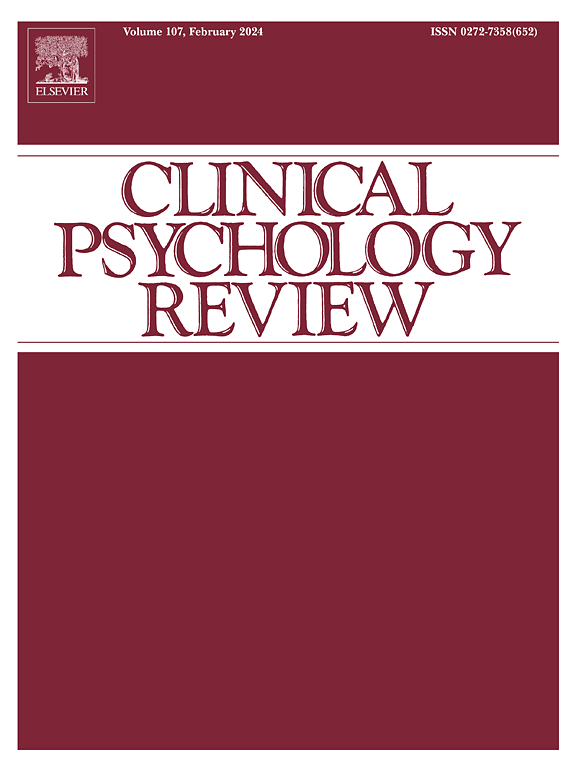解决赌博对受影响的其他人的伤害:范围审查(第一部分:患病率,社会人口概况,赌博概况和危害)
IF 12.2
1区 心理学
Q1 PSYCHOLOGY, CLINICAL
引用次数: 0
摘要
人们越来越意识到赌博的危害会影响到社交网络,包括家庭成员和朋友。这一范围审查的广泛目的是检查赌博危害成人影响他人的当代研究,涵盖患病率,社会人口统计资料,赌博资料和危害(第一部分);以及应对策略、评估和治疗(第二部分)。对电子数据库的系统搜索确定了2000年以来发表的121项研究,其中88项与患病率(9.9%)、社会人口概况(6.6%)、赌博概况(4.1%)和危害(71.9%)有关。一般人群的患病率估计在4.5% - 21.2%之间,尽管这些可能夸大了直接危害,因为它们只关注接触问题赌博。社会人口统计资料是混合的,但女性更经常受到家庭成员的影响,而男性更经常受到亲密朋友的影响。受影响的人也比未受影响的人有更高的赌博参与和问题。赌博问题平均伤害六个人,而这些人平均遭受七个人的伤害,其中许多人在问题解决后仍然存在,导致生活质量下降。研究一致发现,伤害涉及多个领域,其中最常见的是情感和关系伤害,其次是经济和健康伤害。使用与赌博直接相关或不直接相关的测量方法一致地确定了危害,但在采用不直接涉及赌博的标准化测量方法的研究中,模棱两可的发现最为明显。赌徒和受影响者之间的伤害认知存在一些不一致,这表明不同的家庭经历。这些发现强调了政府、行业、研究人员和服务提供者需要采取有针对性的行动,以保护受影响的其他人免受与赌博有关的伤害。本文章由计算机程序翻译,如有差异,请以英文原文为准。
Addressing gambling harm to affected others: A scoping review (Part I: Prevalence, socio-demographic profiles, gambling profiles, and harm)
Awareness is growing that gambling harm can affect social networks, including family members and friends. This scoping review broadly aimed to examine contemporary research on gambling harm to adult affected others, covering prevalence, socio-demographic profiles, gambling profiles, and harm (Part I); and coping strategies, assessment, and treatment (Part II). A systematic search of electronic databases identified 121 studies published from 2000, 88 of which related to prevalence (9.9 %), socio-demographic profiles (6.6 %), gambling profiles (4.1 %), and harm (71.9 %). Prevalence estimates in the general population ranged from 4.5 %–21.2 %, though these may overstate direct harm by focusing on exposure to problem gambling. Socio-demographic profiles are mixed, but women are more often affected family members and men are more often affected close friends. Affected others also have higher gambling participation and problems than non-affected individuals. Gambling problems harm an average of six others, who experience an average of seven harms, many of which persist beyond problem resolution, resulting in reduced quality of life. Studies consistently identified harm across multiple domains of harm, with emotional and relationship harms the most common, followed by financial and health harms. Harms were consistently identified using measures with and without direct reference to gambling, but equivocal findings were most evident in research employing standardised measures that did not directly reference gambling. There was some discordance in harm perceptions between gamblers and affected others, suggesting differing family experiences. These findings highlight the need for targeted action by governments, industry, researchers, and service providers to protect affected others from gambling-related harm.
求助全文
通过发布文献求助,成功后即可免费获取论文全文。
去求助
来源期刊

Clinical Psychology Review
PSYCHOLOGY, CLINICAL-
CiteScore
23.10
自引率
1.60%
发文量
65
期刊介绍:
Clinical Psychology Review serves as a platform for substantial reviews addressing pertinent topics in clinical psychology. Encompassing a spectrum of issues, from psychopathology to behavior therapy, cognition to cognitive therapies, behavioral medicine to community mental health, assessment, and child development, the journal seeks cutting-edge papers that significantly contribute to advancing the science and/or practice of clinical psychology.
While maintaining a primary focus on topics directly related to clinical psychology, the journal occasionally features reviews on psychophysiology, learning therapy, experimental psychopathology, and social psychology, provided they demonstrate a clear connection to research or practice in clinical psychology. Integrative literature reviews and summaries of innovative ongoing clinical research programs find a place within its pages. However, reports on individual research studies and theoretical treatises or clinical guides lacking an empirical base are deemed inappropriate for publication.
 求助内容:
求助内容: 应助结果提醒方式:
应助结果提醒方式:


